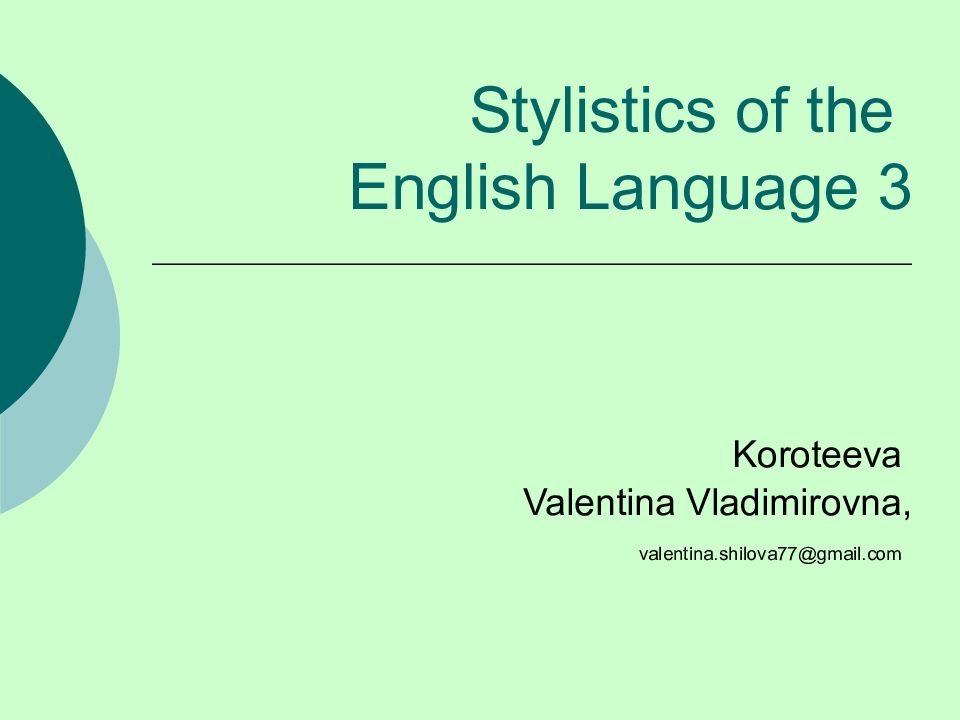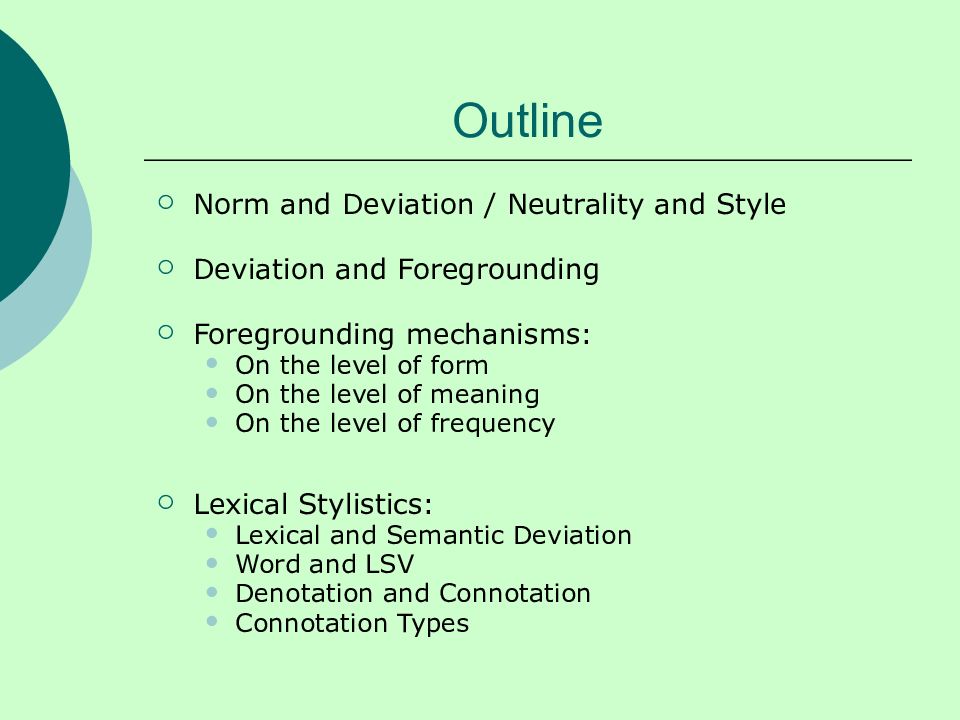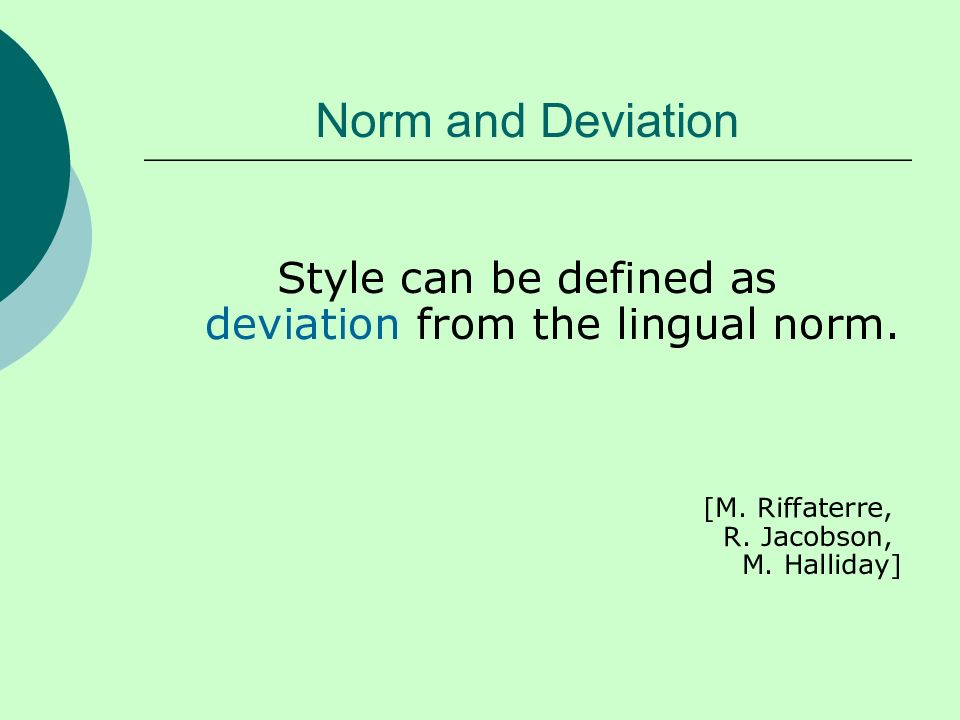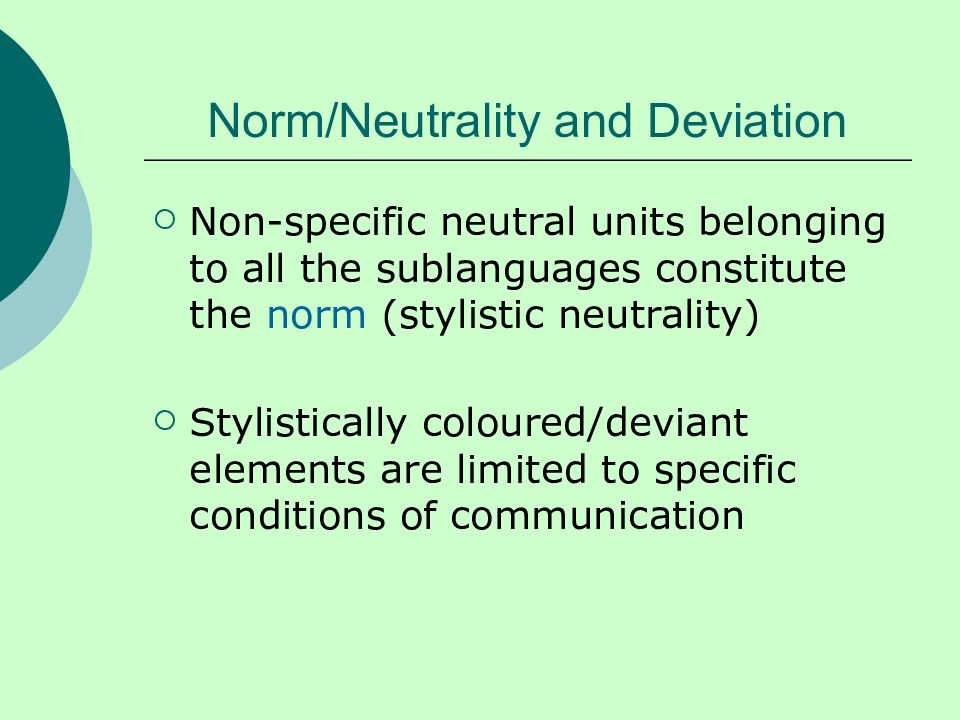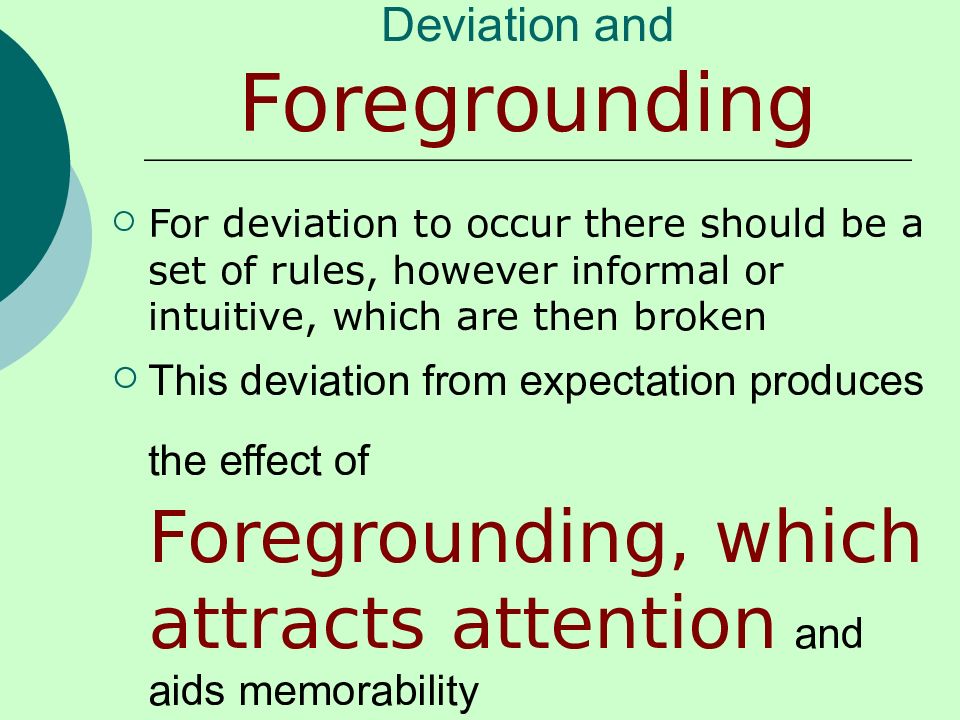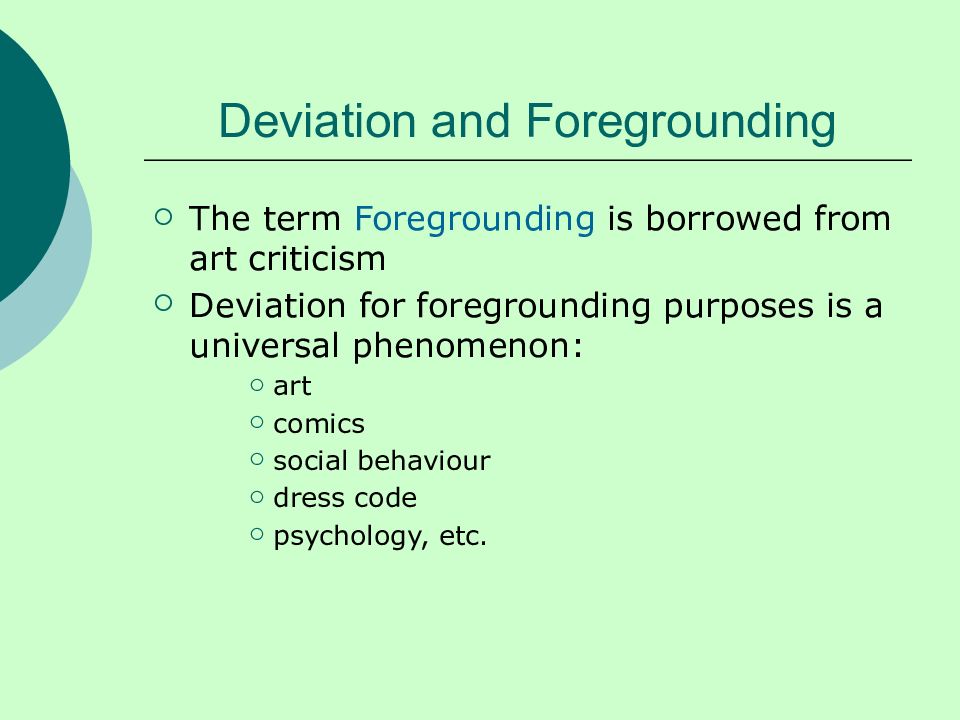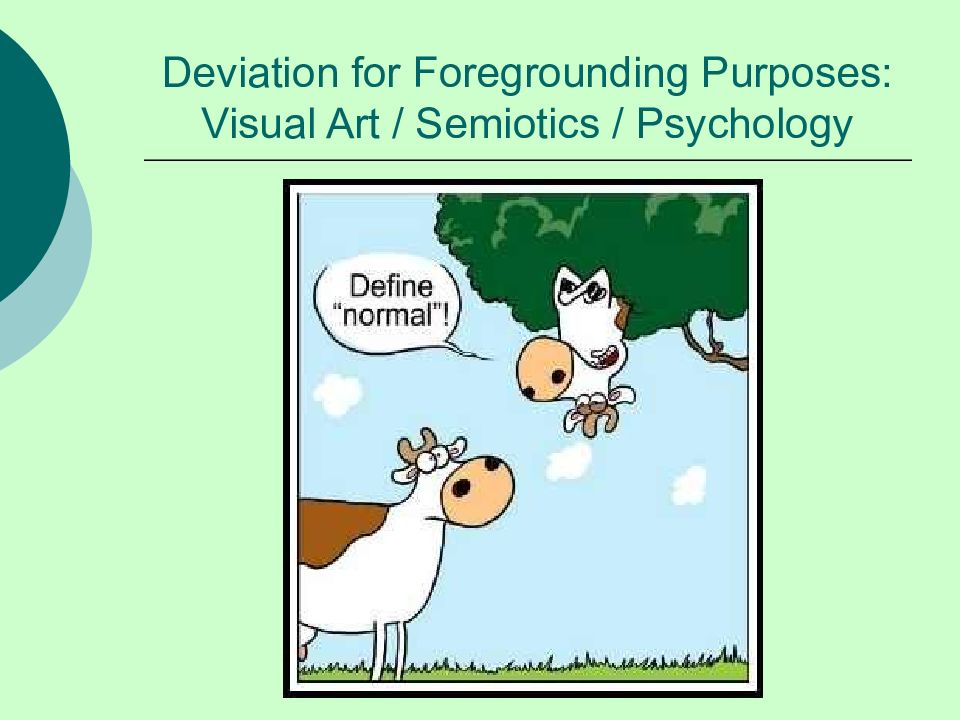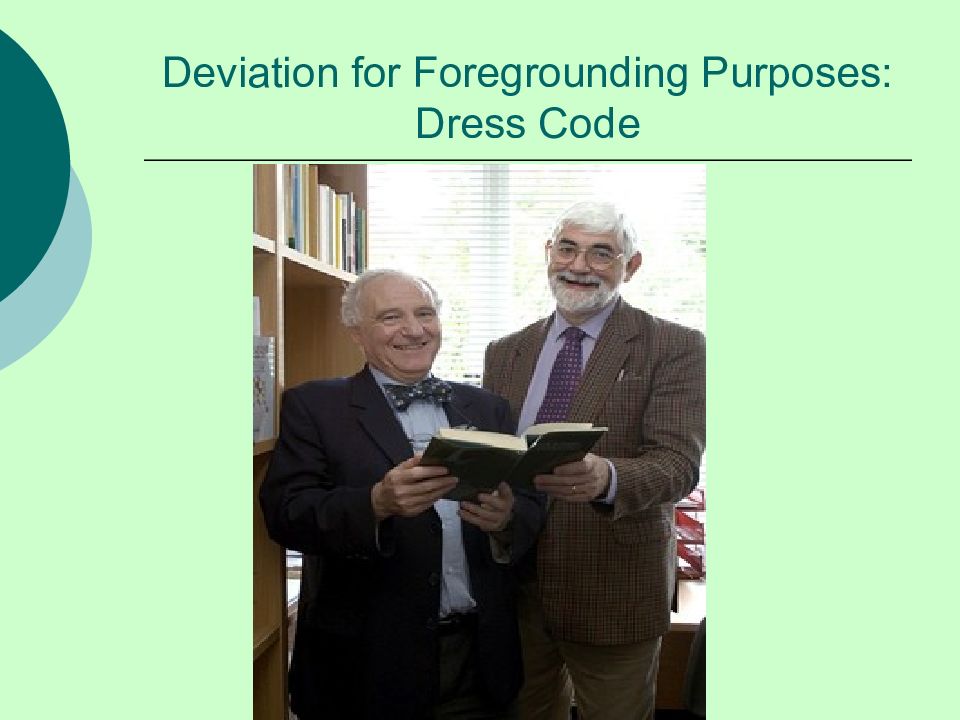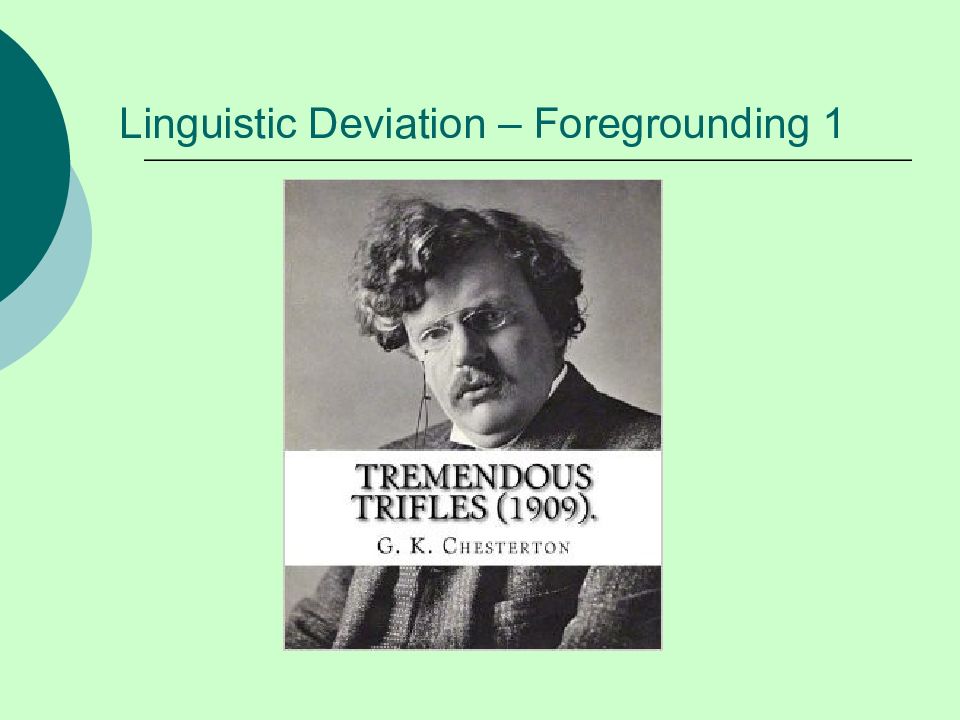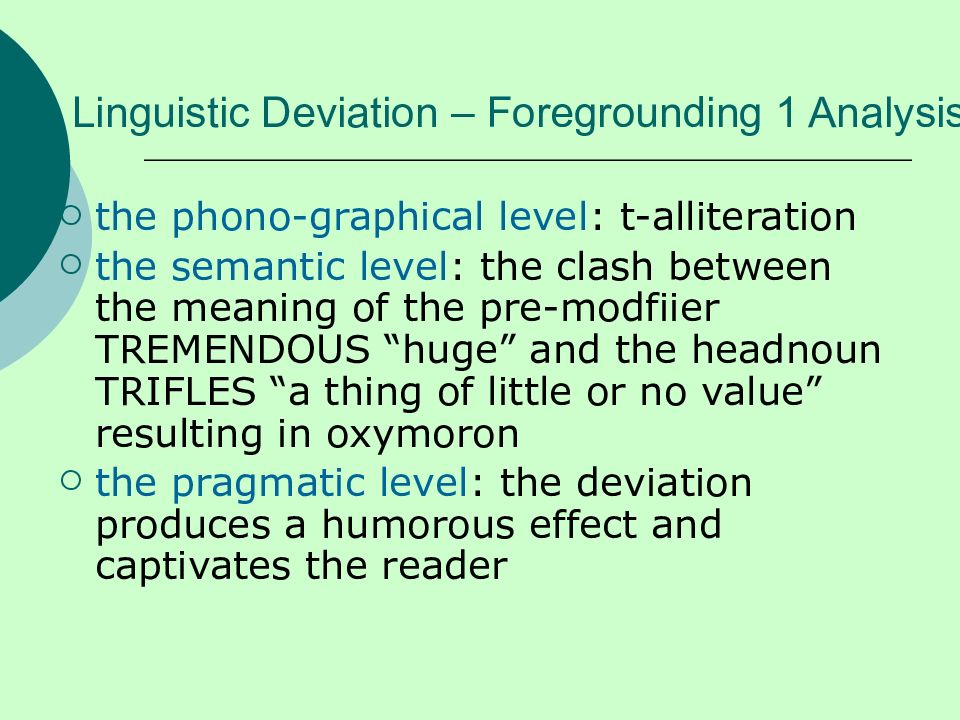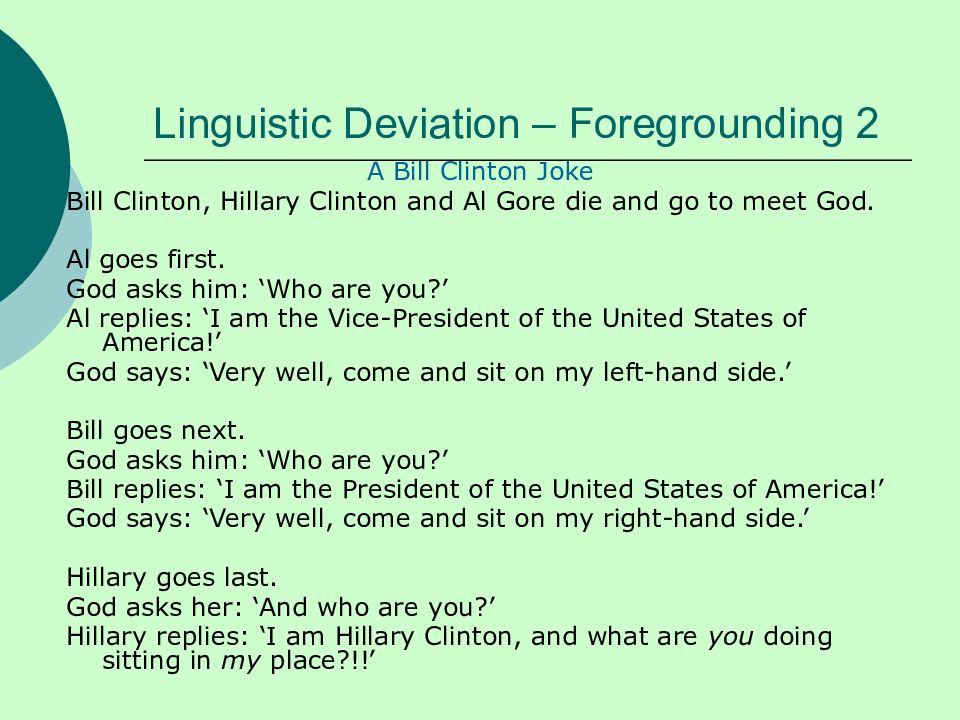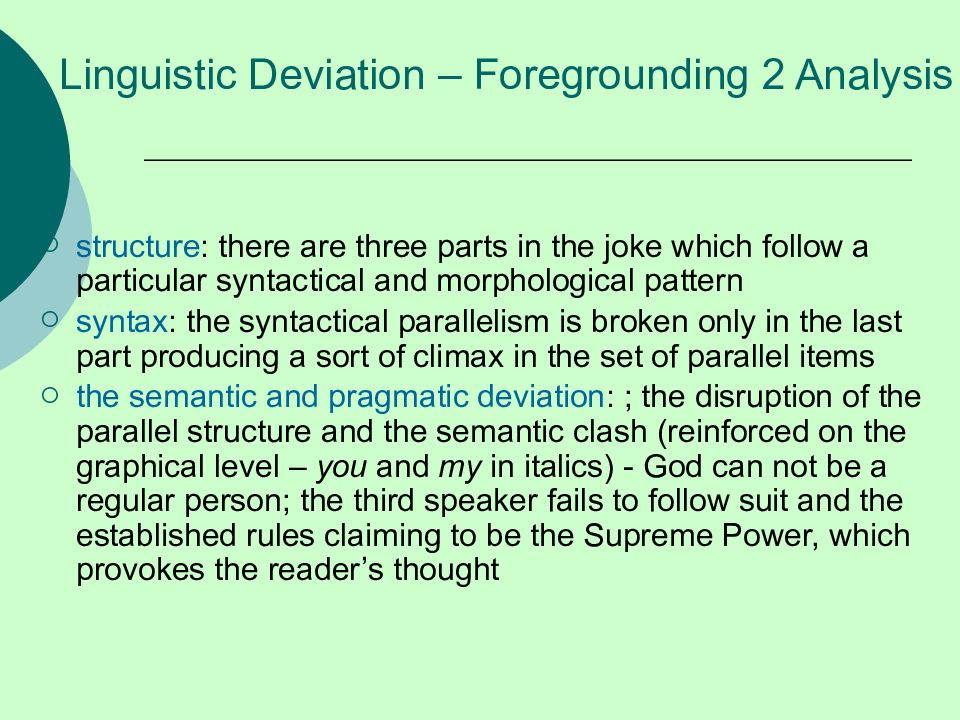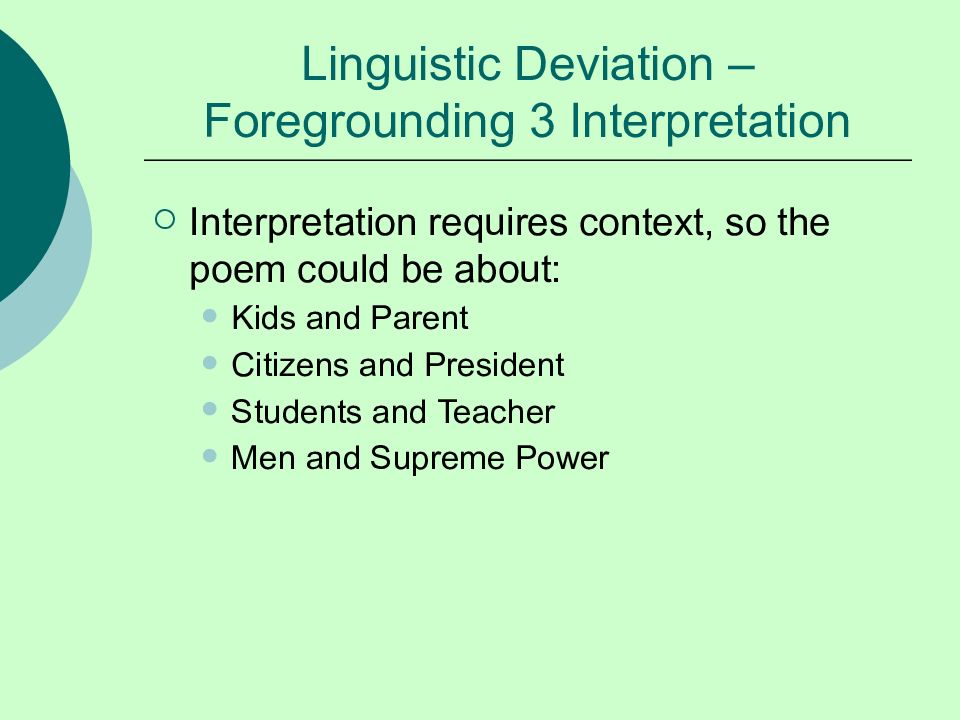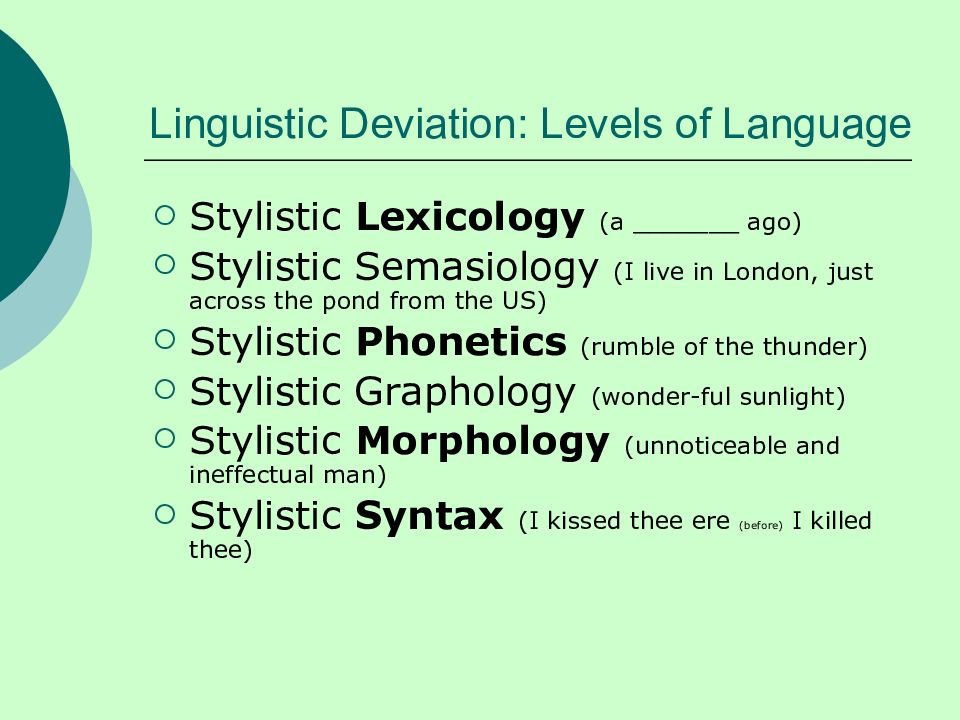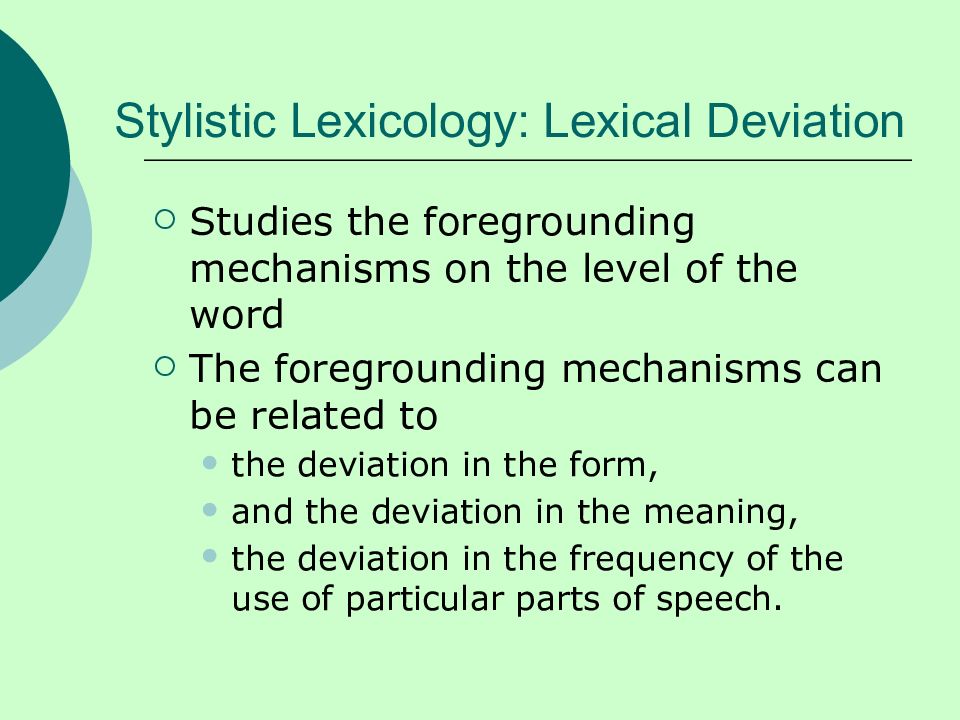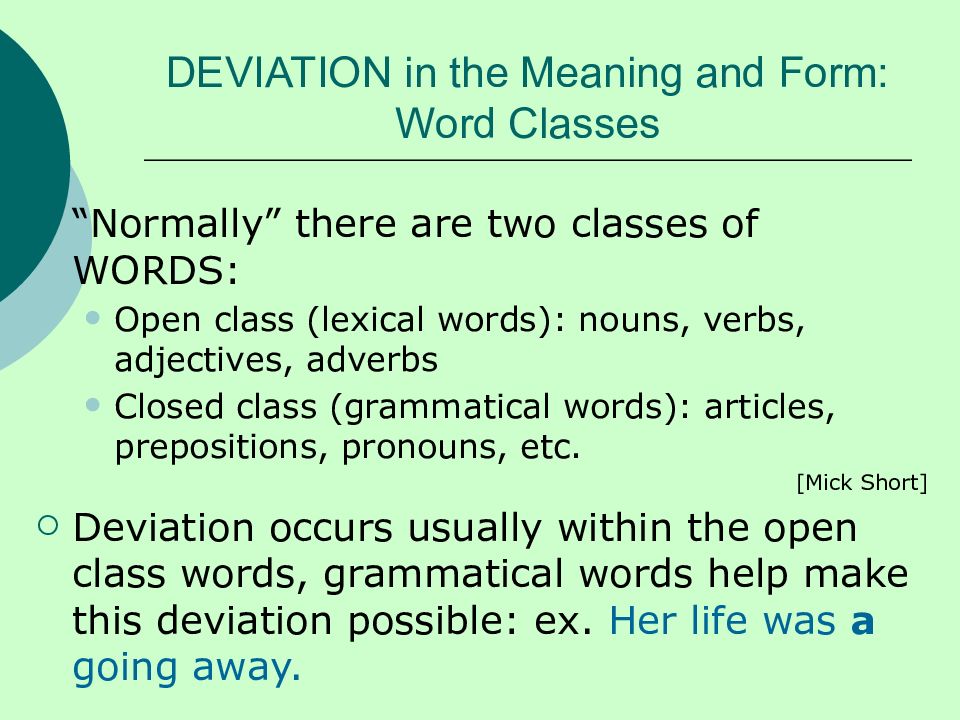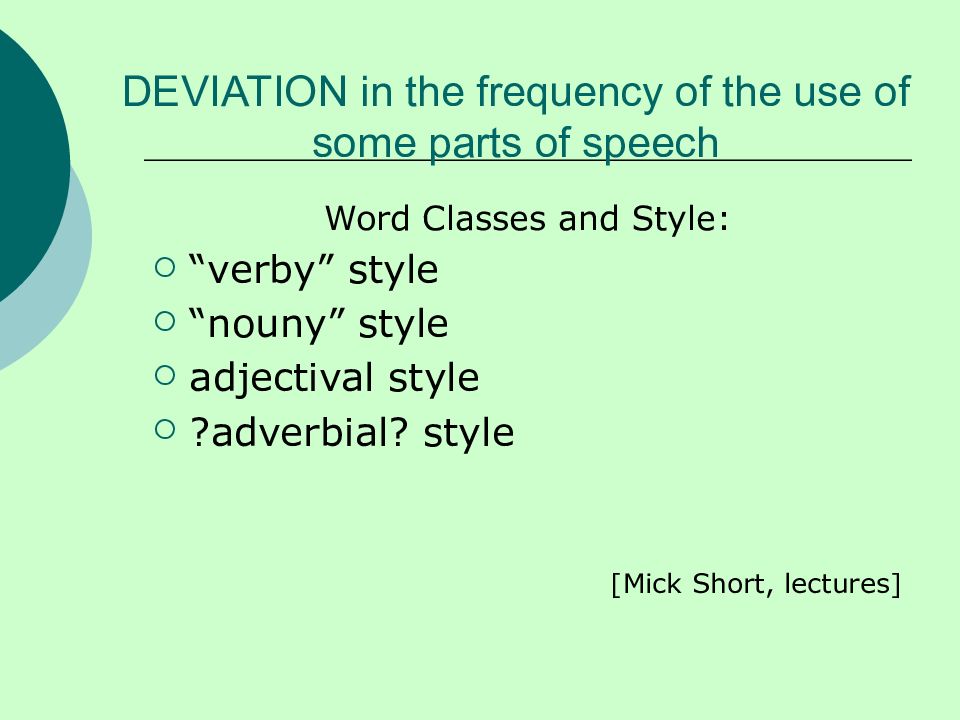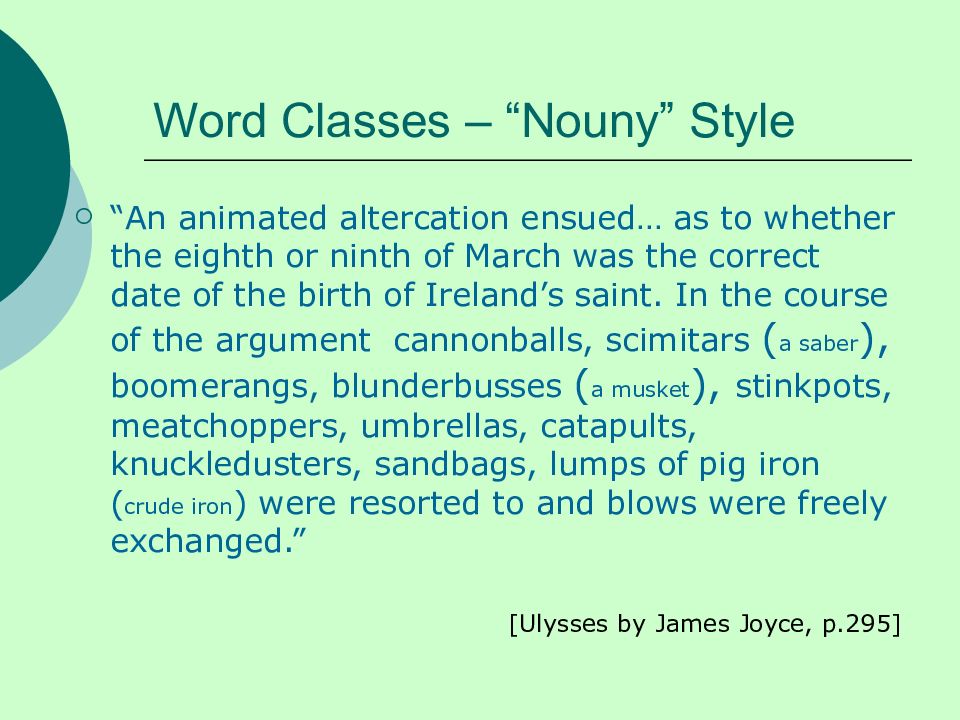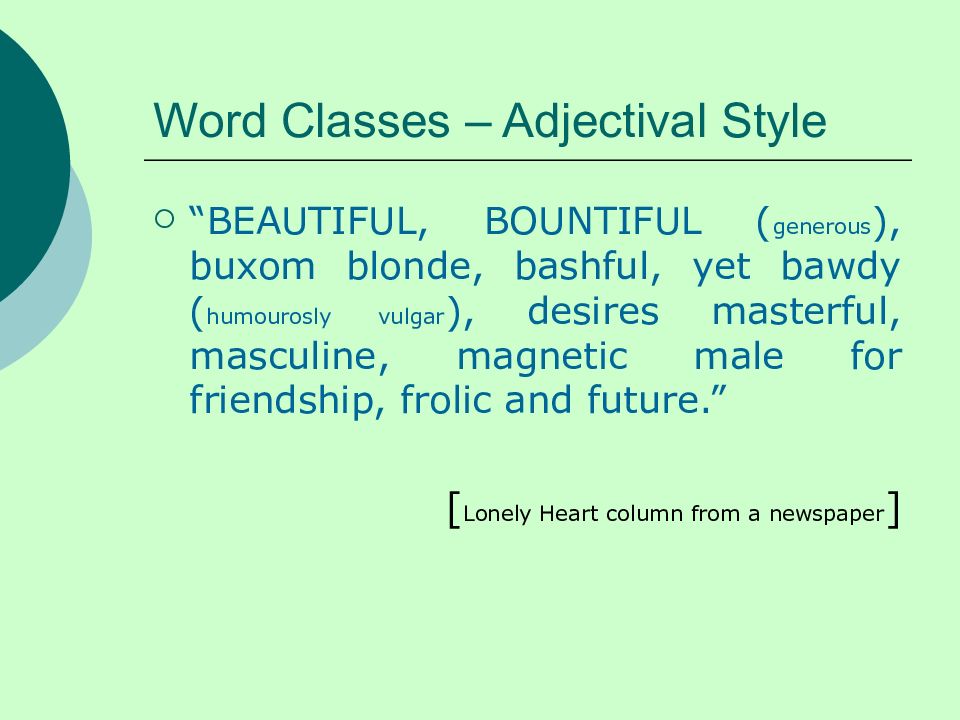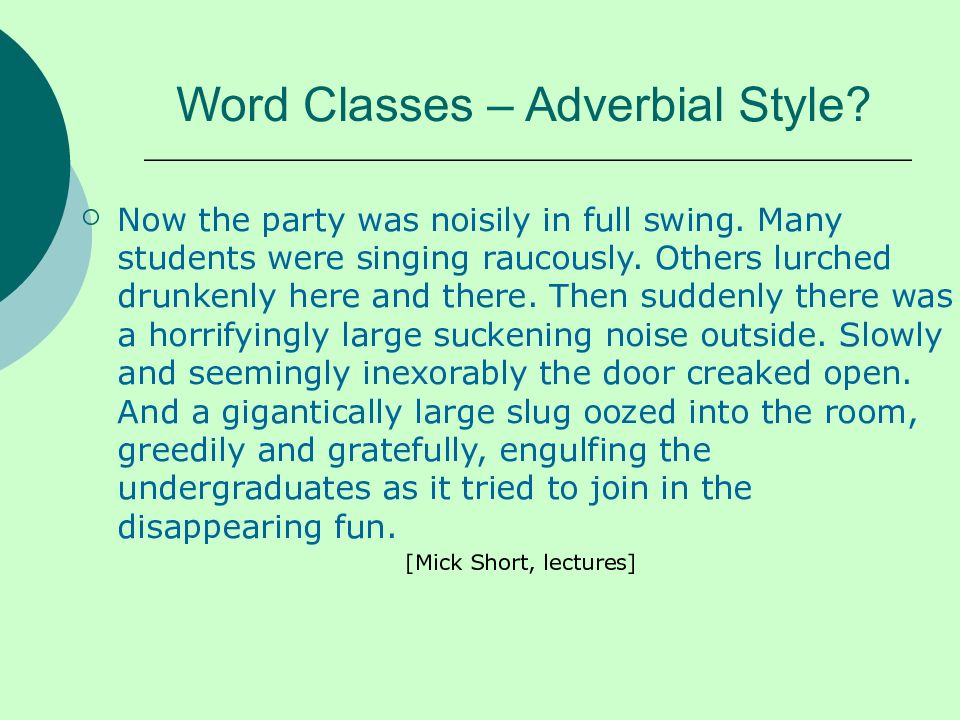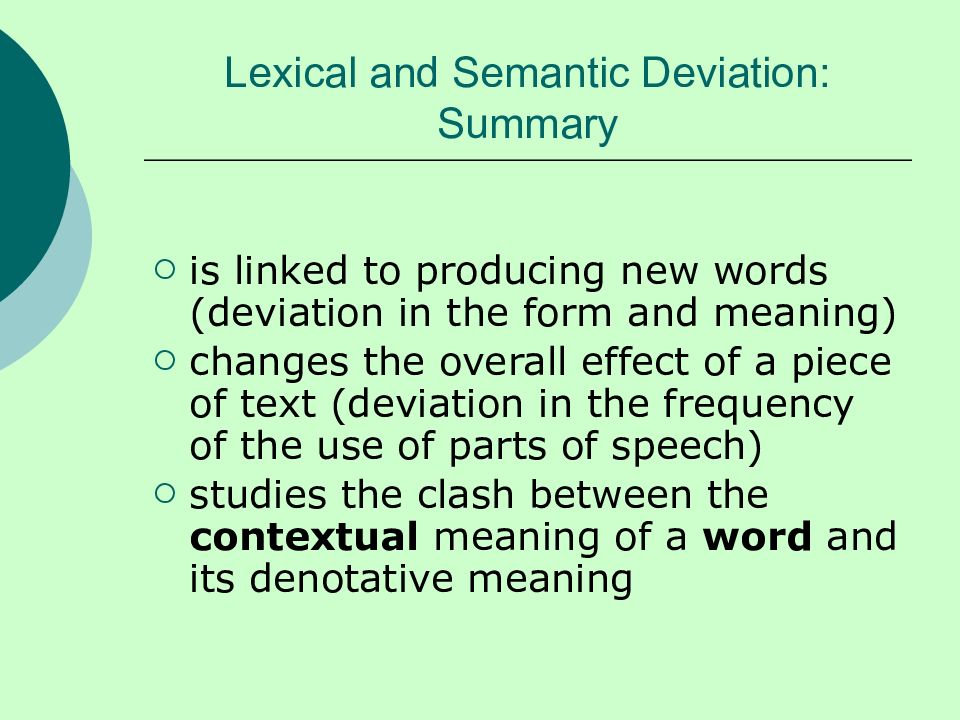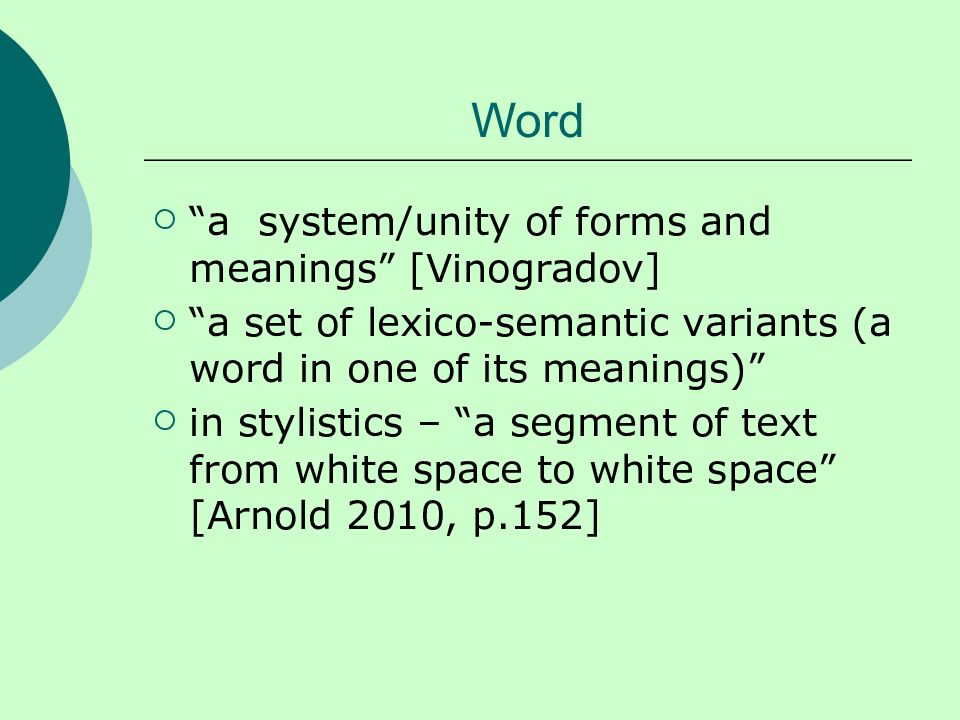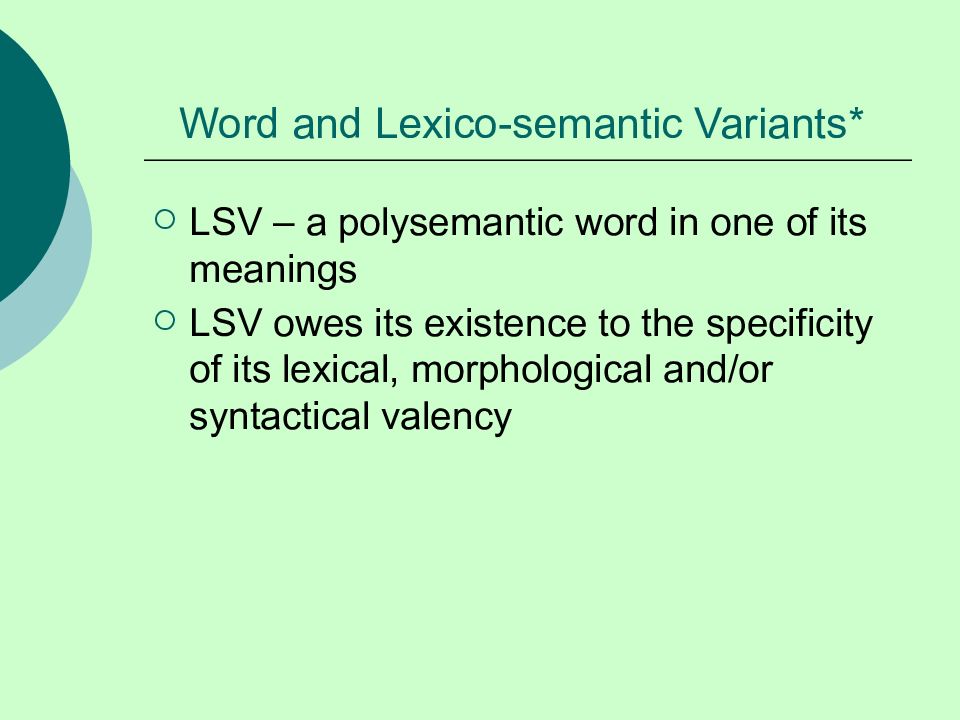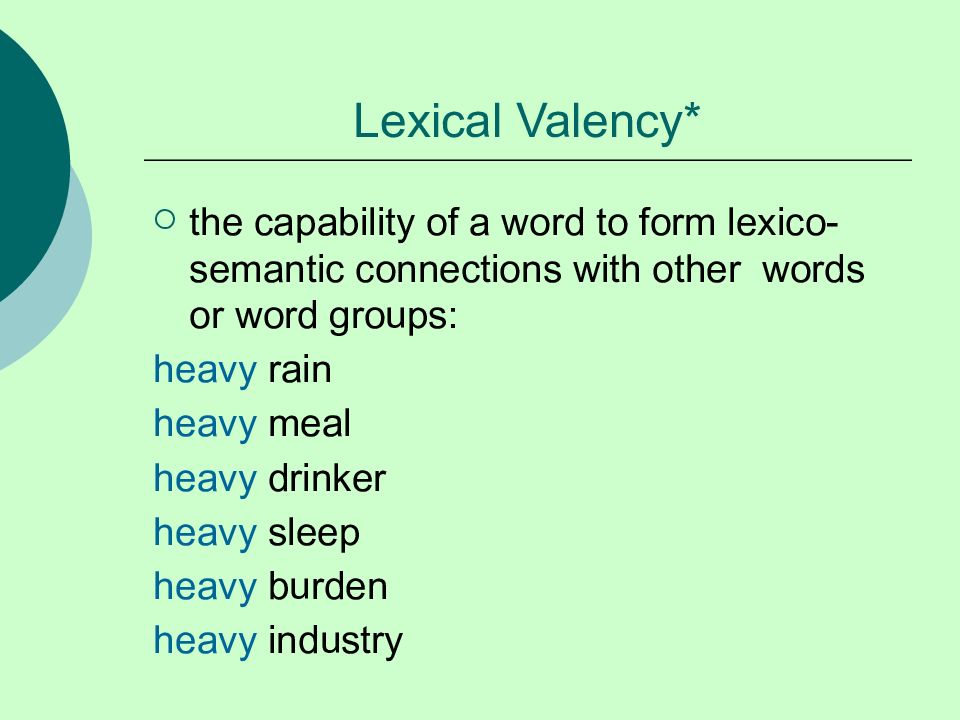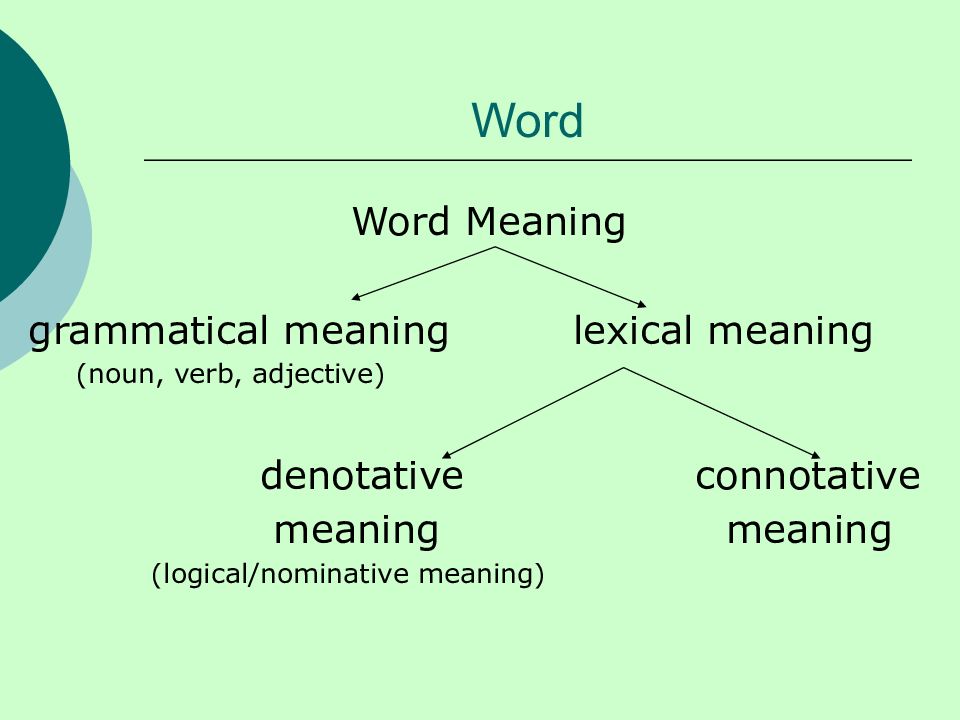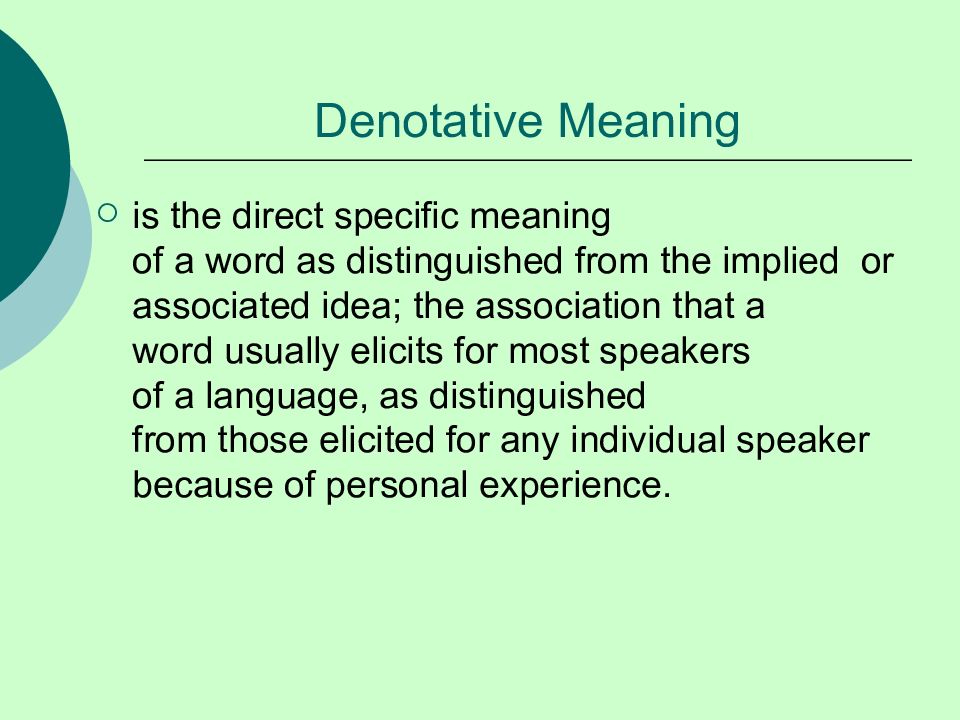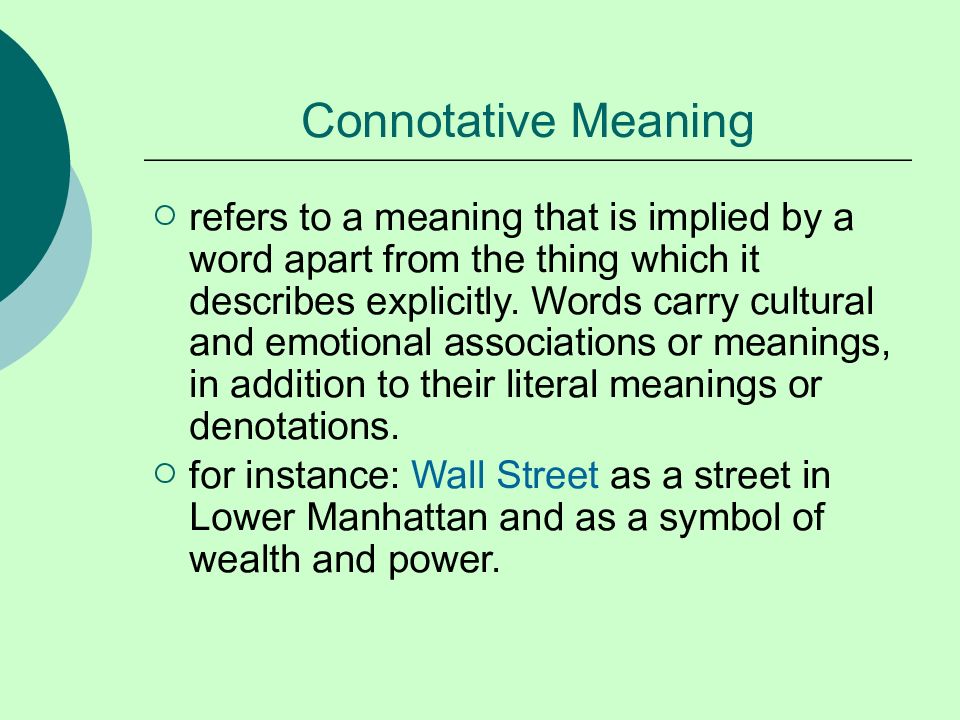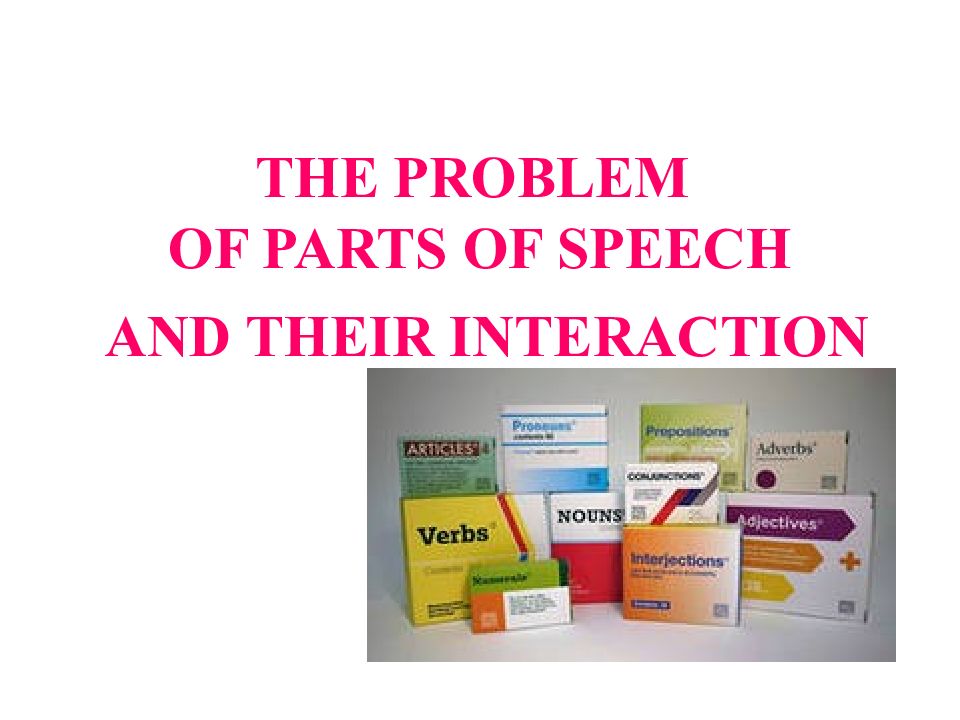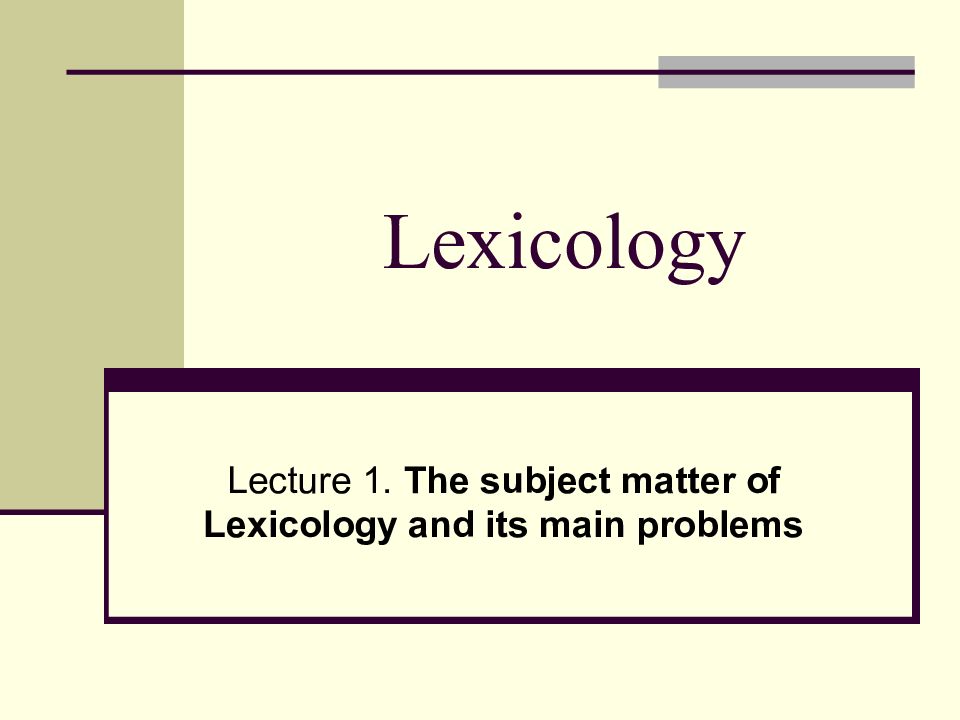Первый слайд презентации: Stylistics of the English Language 3 Koroteeva Valentina Vladimirovna, valentina.shilova77@gmail.com
Слайд 2: Outline
Norm and Deviation / Neutrality and Style D eviation and Foregrounding Foregrounding mechanisms: On the level of form On the level of meaning On the level of frequency Lexical Stylistics: Lexical and Semantic Deviation Word and LSV Denotation and Connotation Connotation Types
Слайд 3: Norm and Deviation
Style can be defined as deviation from the lingual norm. [M. Riffaterre, R. Jacobson, M. Halliday]
Слайд 4: Norm/Neutrality and Deviation
Non-specific neutral units belonging to all the sublanguages constitute the norm (stylistic neutrality) Stylistically coloured/deviant elements are limited to specific conditions of communication
Слайд 5: Deviation and Foregrounding
For deviation to occur there should be a set of rules, however informal or intuitive, which are then broken This deviation from expectation produces the effect of Foregrounding, which attracts attention and aids memorability
Слайд 6: Deviation and Foregrounding
The term Foregrounding is borrowed from art criticism Deviation for foregrounding purposes is a universal phenomenon: art comics social behaviour dress code psychology, etc.
Слайд 7: Deviation for Foregrounding Purposes: Visual Art / Semiotics / Psychology
Слайд 10: Linguistic Deviation – Foregrounding 1 Analysis
the phono-graphical level : t-alliteration the semantic level : the clash between the meaning of the pre-modfiier TREMENDOUS “huge” and the headnoun TRIFLES “a thing of little or no value” resulting in oxymoron the pragmatic level : the deviation produces a humorous effect and captivates the reader
Слайд 11: Linguistic Deviation – Foregrounding 2
A Bill Clinton Joke Bill Clinton, Hillary Clinton and Al Gore die and go to meet God. Al goes first. God asks him: ‘Who are you?’ Al replies: ‘I am the Vice-President of the United States of America!’ God says: ‘Very well, come and sit on my left-hand side.’ Bill goes next. God asks him: ‘Who are you?’ Bill replies: ‘I am the President of the United States of America!’ God says: ‘Very well, come and sit on my right-hand side.’ Hillary goes last. God asks her: ‘And who are you?’ Hillary replies: ‘I am Hillary Clinton, and what are you doing sitting in my place?!!’
Слайд 12: Linguistic Deviation – Foregrounding 2 Analysis
structure : there are three parts in the joke which follow a particular syntactical and morphological pattern syntax : the syntactical parallelism is broken only in the last part producing a sort of climax in the set of parallel items the semantic and pragmatic deviation : ; the disruption of the parallel structure and the semantic clash (reinforced on the graphical level – you an d my in italics) - God can not be a regular person; the third speaker fails to follow suit and the established rules claiming to be the Supreme Power, which provokes the reader’s thought
Слайд 13: Linguistic Deviation – Foregrounding 3
The Secret Sits We all dance round in a ring and suppose but the Secret sits in the middle and knows. Robert Frost (1874-1963)
Слайд 14: Linguistic Deviation – Foregrounding 3 Analysis
Graphical and semantic deviation (capitalisation and personification - Secret) Syntactical and morphological parallelism ([S+V+PP+Conj+V]Conj[S+V+PP+Conj+V]) Semantic contrast (between stative SIT and dynamic DANCE; between the usually transitive verbs SUPPOSE and KNOW and their intransitive use in the poem; between factive verb KNOW and non-factive verb SUPPOSE) Deictic deviation (normally WE composes the center of the universe, in the poem the SECRET does)
Слайд 15: Linguistic Deviation – Foregrounding 3 Interpretation
Interpretation requires context, so the poem could be about: Kids and P arent Citizens and President Students and Teacher Men and Supreme Power
Stylistic Lexicology (a _______ ago) Stylistic Semasiology (I live in London, just across the pond from the US) Stylistic Phonetics (rumble of the thunder) Stylistic Graphology (wonder-ful s u nlight) Stylistic Morphology (unnoticeable and ineffectual man) Stylistic Syntax (I kissed thee ere (before) I killed thee)
Слайд 17: Stylistic Lexicology: Lexical Deviation
Studies the foregrounding mechanisms on the level of the word The foregrounding mechanisms can be related to the deviation in the form, and the deviation in the meaning, the deviation in the frequency of the use of particular parts of speech.
Слайд 18: DEVIATION in the Meaning and Form: Word Classes
“Normally” there are two classes of WORDS: Open class (lexical words): nouns, verbs, adjectives, adverbs Closed class (grammatical words): articles, prepositions, pronouns, etc. [Mick Short] Deviation occurs usually within the open class words, grammatical words help make this deviation possible: ex. Her life was a going away.
Слайд 19: DEVIATION in the Meaning and Form: Word Formation
Affixation: “I’m not joking, I’m realing” (to real – “to really mean this”) “She handbagged her European counterparts.” (to handbag – “to hit with a bag”) Functional conversion – the change is signaled by the overall grammatical context: “I decided to toothbrush my way into the bathroom.” (to toothbrush – “to try to enter the bathroom while brushing teeth at the expense of someone already there ”) Blending: the forgettle (forget+kettle) – the name used in an advertising slogan to the Russel Hobbs kettle which switched itself off
Слайд 20: DEVIATION in the frequency of the use of some parts of speech
Word Classes and Style: “verby” style “nouny” style adjectival style ?adverbial? style [Mick Short, lectures]
Слайд 21: Word Classes – “Verby” Style
Style tips: Twist and wrap the corners of a plain white shirt around your waist for a crossover effect… Get out your party skirt and team it with a day jacket – for a surprisingly sophisticated evening look… Forget about colour rules – mix turquoise with orange and green… Dash into your nearest haberdashery department in search of fabulous buttons… Wear two pairs of opaque tights for maximum matt effect… [Cosmopolitan, February, 1991]
Слайд 22: Word Classes – “Nouny” Style
“An animated altercation ensued… as to whether the eighth or ninth of March was the correct date of the birth of Ireland’s saint. In the course of the argument cannonballs, scimitars ( a saber ), boomerangs, blunderbusses ( a musket ), stinkpots, meatchoppers, umbrellas, catapults, knuckledusters, sandbags, lumps of pig iron ( crude iron ) were resorted to and blows were freely exchanged.” [Ulysses by James Joyce, p.295]
Слайд 23: Word Classes – Adjectival Style
“BEAUTIFUL, BOUNTIFUL ( generous ), buxom blonde, bashful, yet bawdy ( humourosly vulgar ), desires masterful, masculine, magnetic male for friendship, frolic and future.” [ Lonely Heart column from a newspaper ]
Слайд 24: Word Classes – Adverbial Style?
Now the party was noisily in full swing. Many students were singing raucously. Others lurched drunkenly here and there. Then suddenly there was a horrifyingly large suckening noise outside. Slowly and seemingly inexorably the door creaked open. And a gigantically large slug oozed into the room, greedily and gratefully, engulfing the undergraduates as it tried to join in the disappearing fun. [Mick Short, lectures]
Слайд 25: Lexical and Semantic Deviation: Summary
is linked to producing new words (deviation in the form and meaning) c h anges the overall effect of a piece of text (deviation in the frequenc y of the use of parts of speech) studies the clash between the contextual meaning of a word and its denotative meaning
Слайд 26: Word
“a system/unity of forms and meanings” [Vinogradov] “a set of lexico-semantic variants (a word in one of its meanings)” in stylistics – “a segment of text from white space to white space” [Arnold 2010, p.152]
Слайд 27: Word and Lexico-semantic Variants*
LSV – a polysemantic word in one of its meanings LSV owes its existence to the specificity of its lexical, morphological and/or syntactical valency
Слайд 28: Lexical V alency *
the capability of a word to form lexico-semantic connections with other words or word groups: heavy rain heavy meal heavy drinker heavy sleep heavy burden heavy industry
Слайд 29: Word
Word Meaning grammatical meaning lexical meaning (noun, verb, adjective) denotative connotative meaning meaning (logical/nominative meaning)
Слайд 30: Denotative Meaning
is the direct specific meaning of a word as distinguished from the implied or associated idea ; the association that a word usually elicits for most speakers of a language, as distinguished from those elicited for any individual speaker because of personal experience.
Слайд 31: Connotative Meaning
refers to a meaning that is implied by a word apart from the thing which it describes explicitly. Words carry cultural and emotional associations or meanings, in addition to their literal meanings or denotations. for instance: Wall Street as a street in Lower Manhattan and as a symbol of wealth and power.
